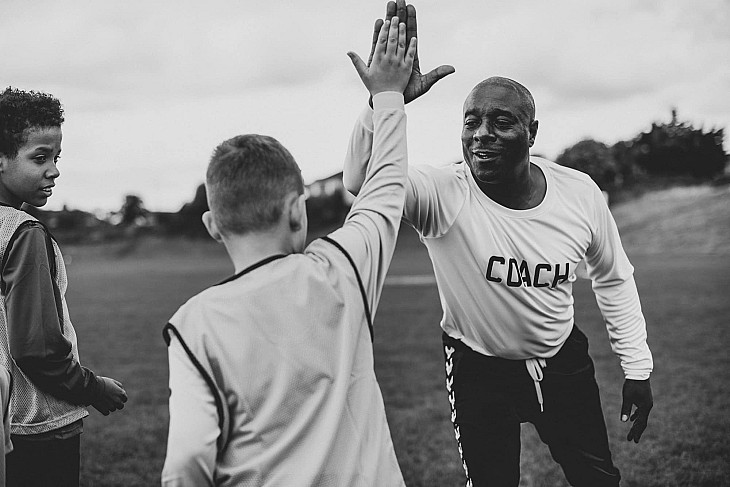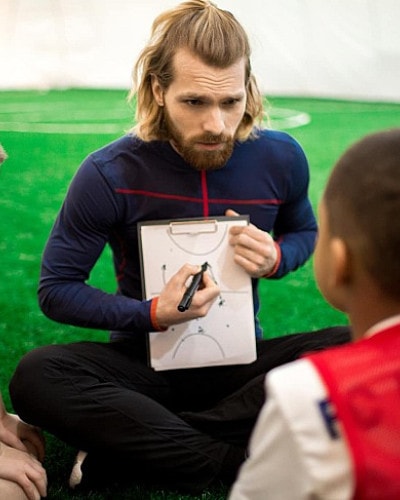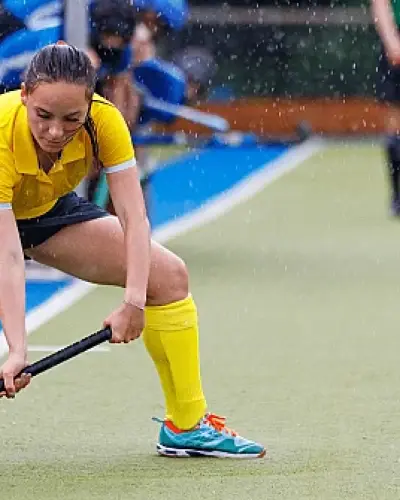How to Motivate Your Team to Perform at Their Best
As a coach, motivating your players is one of your most important tasks. Without motivation, performance becomes inconsistent, training is less effective, and even highly driven teammates may lose their enthusiasm.
To consistently inspire your players, you first need to understand what motivation is, where it comes from, and how it can be positively influenced.
What Is Motivation?
The economic definition of motivation states:
"Motivation is the state of a person that leads them to choose a specific course of action to achieve a desired outcome and maintain this behavior in terms of direction and intensity."
Simply put, players set a goal (e.g., scoring a goal) and take action with persistence and effort to achieve it.
There are two primary types of motivation:
✔ Intrinsic Motivation
- Comes from within the player.
- They train and compete because they genuinely enjoy the sport and want to improve.
- Intrinsically motivated players don’t need external incentives but can still be inspired by others' enthusiasm.
✔ Extrinsic Motivation
- Comes from external factors.
- A player may perform better because their family is watching or because a scout from a professional club is present.
- Players who rely on extrinsic motivation sometimes struggle to stay motivated in less exciting situations.
As a coach, your role is to identify motivation levels in your players and provide the right incentives when needed.
Tips to Boost Motivation in Your Team
1. Give Praise
A simple, genuine compliment can make a big difference. Players appreciate when their hard work is noticed—even small improvements matter.
💡 Example: Instead of just saying "Good job," highlight something specific:
"I noticed how well you positioned yourself today. Keep that up!"
2. Reward Effort
Recognize your team’s hard work, whether after a tough match, an intense training session, or a great display of teamwork.
✔ A small reward, like a round of drinks in the locker room, can go a long way.
✔ Non-material rewards work just as well—like finishing training with a fun game instead of extra drills.
3. Focus on Small Steps
Encourage your players to think game by game and see progress as a series of small victories.
✔ This ensures that every opponent is taken seriously, preventing overconfidence or complacency.
✔ It helps the team stay motivated, even after setbacks.
4. Communicate Effectively
✔ Show your players you’re there for them—listen to their concerns and respect their opinions.
✔ Involve them in decisions when possible.
✔ Players who feel valued and included are more likely to stay motivated.
💡 Example: Instead of just giving orders, ask for input:
"What do you think worked well in that last play? How can we improve?"
5. Criticize Constructively
✔ Players need feedback, but how you deliver it makes all the difference.
✔ Phrase criticism in a way that encourages improvement instead of discouragement.
💡 Example:
🚫 "Your sprint speed is too slow."
✅ "If you improve your acceleration, you’ll beat any defender!"
By framing feedback positively, players see opportunities for growth rather than just flaws.
Final Thoughts
✔ Motivation varies between players—what works for one might not work for another.
✔ As a coach, experiment with different approaches and adapt to each player's needs.
✔ During losing streaks, your role becomes even more crucial in lifting your team’s spirit.
The right motivation can turn good players into great ones. Best of luck applying these motivation strategies!






